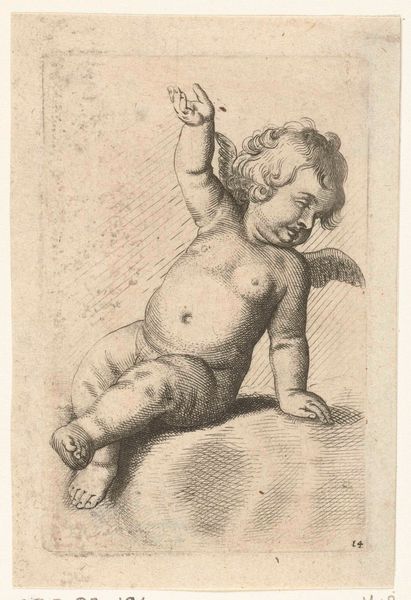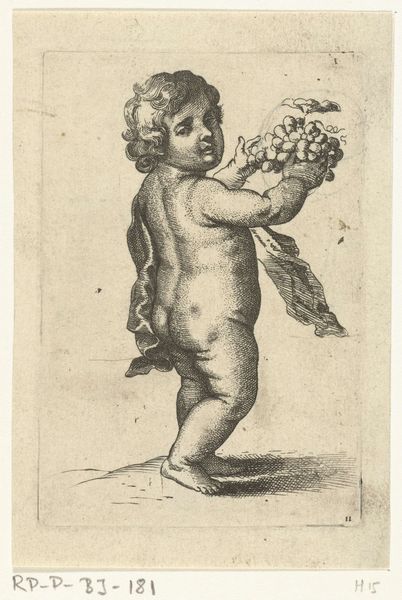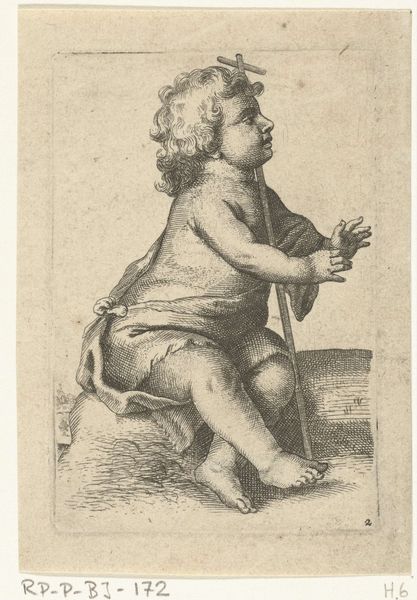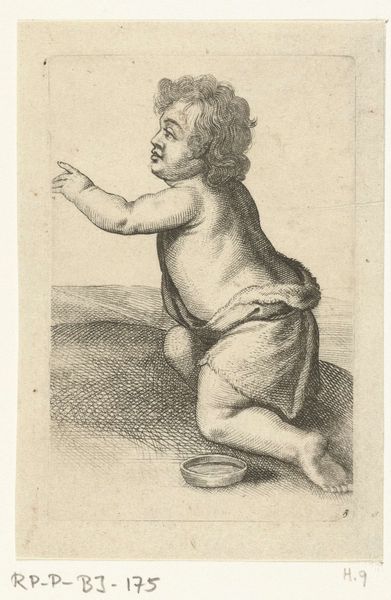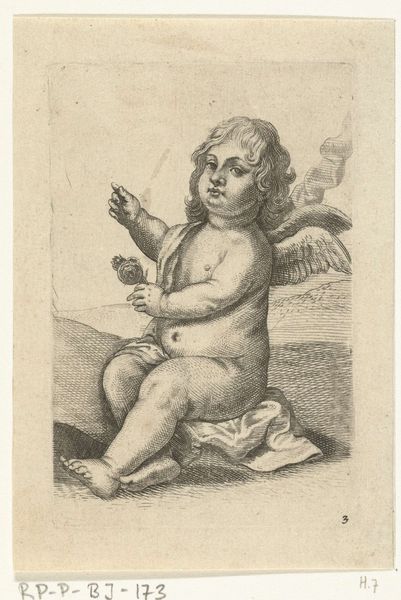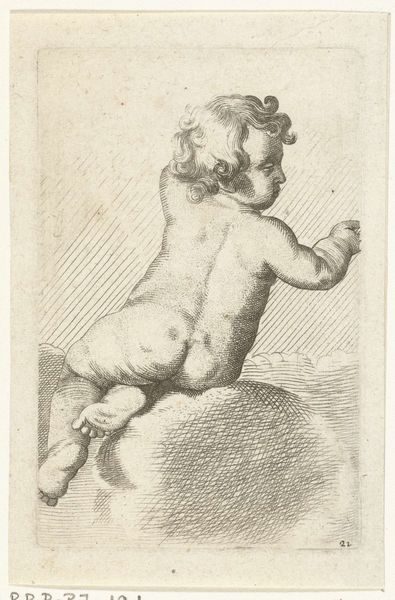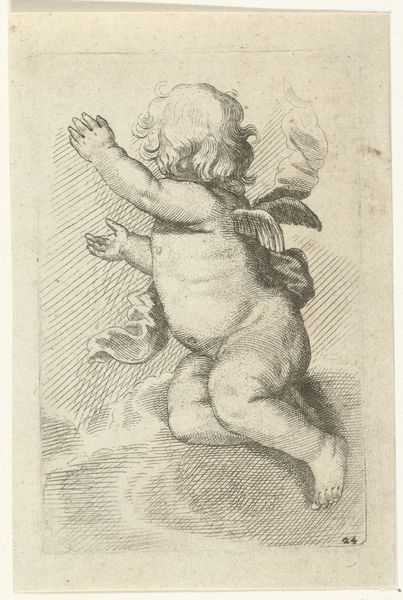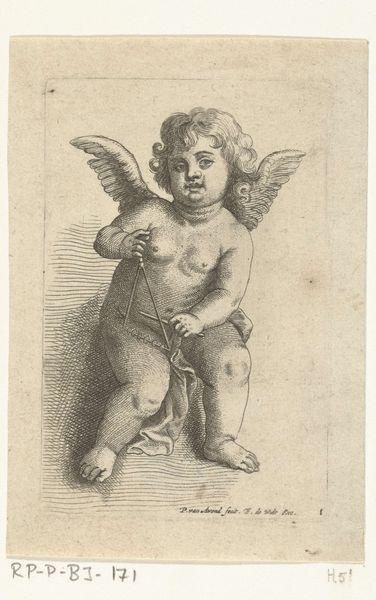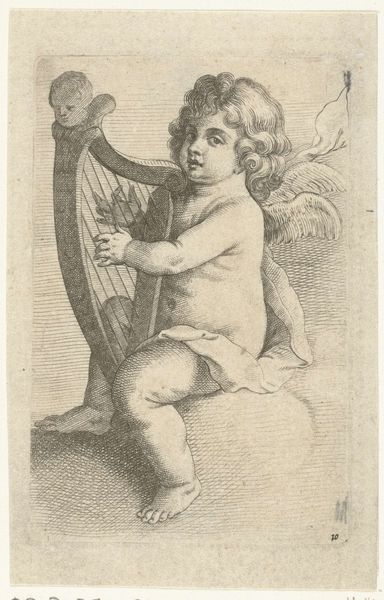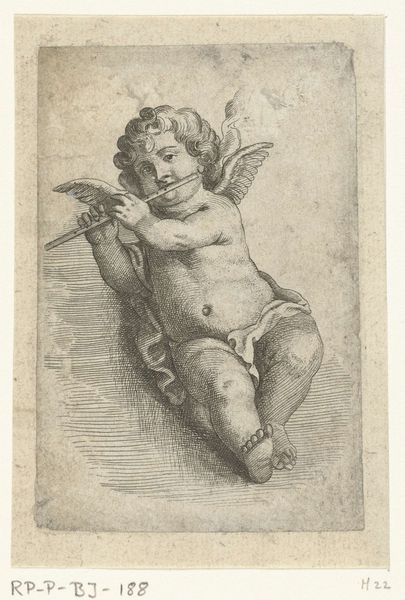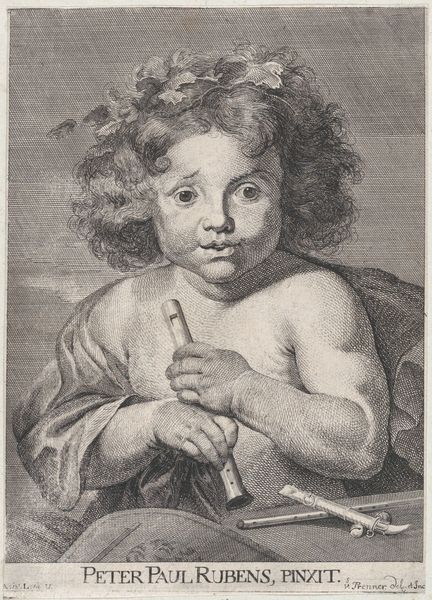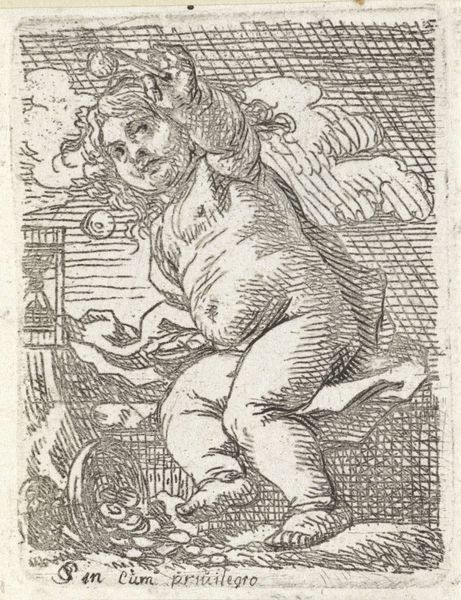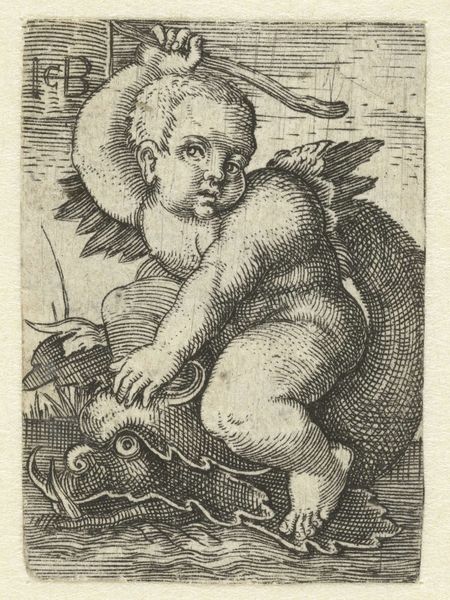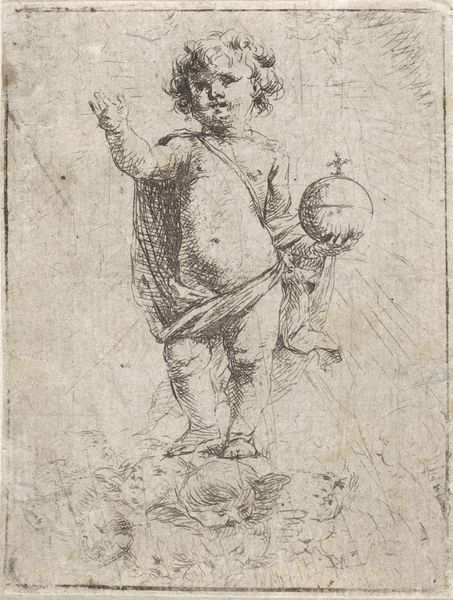
print, etching, engraving
#
portrait
#
baroque
# print
#
etching
#
child
#
pencil drawing
#
genre-painting
#
nude
#
engraving
Dimensions: height 103 mm, width 67 mm
Copyright: Rijks Museum: Open Domain
Editor: We're looking at "Halfnaakt kind in een landschap," or "Half-Naked Child in a Landscape," an etching and engraving by Pieter van Avont, created sometime between 1630 and 1652. The delicate lines of the print give the child a soft, almost ethereal quality. What strikes you most about this piece? Curator: The first thing that grabs me is the tension between the image and its material reality. We have this depiction of idealized innocence, a chubby, rosy-cheeked child seemingly existing in a carefree pastoral state. But the image is created through the painstaking process of etching and engraving. Consider the labor involved in producing this print, the artist’s hand meticulously carving into a metal plate. How does the commercial availability of prints impact artistic value versus the commissioned creation of a unique object? Editor: That’s a great point. The accessibility of prints in that era does change things, doesn’t it? It’s almost a form of early mass production. Does that shift your perspective on how we value the piece now? Curator: Absolutely. Think about the socioeconomic context. Who could afford original paintings? Prints opened up art ownership to a broader audience. This brings the nude figure to a new context, perhaps even re-framing the consumption and interpretation of allegorical and genre figures as potentially accessible, familiar subjects. What does it say about societal values when even ordinary people could possess images previously reserved for the elite? The image itself becomes a commodity. How does that influence the creation and consumption of art in later eras? Editor: That's a fascinating connection to make. It really gets you thinking about the economics of art and its impact on society. Curator: Precisely! And it helps us move beyond simply admiring the aesthetics to understanding the material conditions that made the artwork possible and the social forces it engaged with. It underscores how deeply intertwined art and life truly are.
Comments
No comments
Be the first to comment and join the conversation on the ultimate creative platform.
